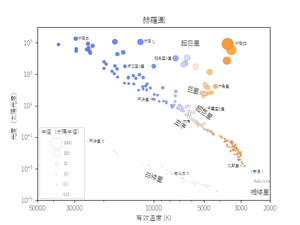Glossary term: 白矮星
Description: 達到八倍太陽質量的恆星預計會以白矮星的形式結束其生命。這其中就包括我們的太陽。白矮星的密度非常高,一顆典型白矮星的質量與太陽相當,但被擠壓成了一個僅比地球略大的球。白矮星不再通過其內核的核反應產生能量,但會因為剩餘的能量而發光。溫度較高的白矮星會呈現出藍色或白色,這是因為它們的表面溫度非常高,會輻射出能量。白矮星的內核可能由氦、碳-氧或氧-氖-鎂組成,具體取決於恆星的初始質量。白矮星並不會在其自引力作用下收縮,這是由於其內部存在電子簡並壓——一種量子現象——帶來的阻力。電子簡並壓最大只能支持 1.4 倍太陽質量的白矮星。質量大於這個極限(稱為錢德拉塞卡極限)的恆星殘骸要麼是中子星,要麼是黑洞。
Related Terms:
See this term in other languages
Term and definition status: The original definition of this term in English have been approved by a research astronomer and a teacher The translation of this term and its definition is still awaiting approval
This is an automated transliteration of the simplified Chinese translation of this term
The OAE Multilingual Glossary is a project of the IAU Office of Astronomy for Education (OAE) in collaboration with the IAU Office of Astronomy Outreach (OAO). The terms and definitions were chosen, written and reviewed by a collective effort from the OAE, the OAE Centers and Nodes, the OAE National Astronomy Education Coordinators (NAECs) and other volunteers. You can find a full list of credits here. All glossary terms and their definitions are released under a Creative Commons CC BY-4.0 license and should be credited to "IAU OAE".
If you notice a factual or translation error in this glossary term or definition then please get in touch.
Related Diagrams
赫羅圖
Credit: IAU OAE/Niall Deacon
License: CC-BY-4.0 Creative Commons 姓名標示 4.0 國際 (CC BY 4.0) icons









